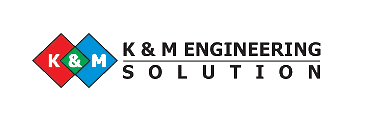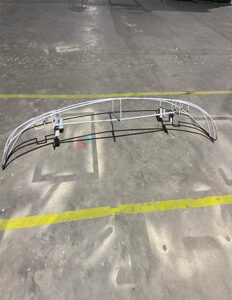For over 25 years, our engineers have been at the forefront of jig and fixture innovation across automotive, agricultural, white goods, and industrial applications. In that time, we’ve watched robotic painting lines evolve from a luxury to an industry standard. But one truth has remained unchanged: even the most advanced robot is only as precise as the jig guiding the part it paints.
We don’t see jigs as accessories. We engineer them as enablers of paint perfection, cycle-time efficiency, and operational consistency.
Why Robotic Lines Depend on Jig Precision
In robotic painting, accuracy isn’t optional. A deviation of 1–2 mm can disrupt spray trajectories, cause shadowed zones, or alter coating thickness. Our jigs are built to eliminate these risks, part after part, shift after shift.
What sets our approach apart is how early we start — from the very first model of the part. We study part geometry, anticipate spray paths, simulate orientation, and assess booth behavior before metal is ever cut.
Design Practices That Deliver Flawless Results
Over hundreds of projects, we’ve developed practices that are now our standard. Here’s what we consistently apply:
Spray Path Integration
Each jig is aligned to the robot’s actual paint path. We match angles, avoid obstructions, and plan for reachability — reducing program edits and overspray.
Minimal Shadow Zones
Through clamp redesign, part positioning, and open-frame engineering, we eliminate dead zones where paint fails to reach.
Smart Clamping Systems
Clamps are color-coded, positioned ergonomically, and designed to retract or stay outside the spray range. Some even have wear indicators.
Thermal and Chemical Resistance
Materials like SS304, aluminum alloys, and heat-resistant polymers ensure jigs can survive the booth environment without degrading.
Lifecycle Durability
We build jigs to last 3–5 years under daily use. Our clients don’t just get ROI — they get long-term reliability.
Example That Changed a Client’s Paint Line
A major auto component supplier approached us with a 9% rejection rate on a robotic painting line. The problem wasn’t the robot. It was the jig — it caused slight tilt and clamp shadows.
K&M Engineering Solution designed a new fixture that:
-
Repositioned the part at a 7° angle to match the robot’s path
-
Used tubular SS profiles instead of flat box sections
-
Switched to floating clamps with silicone pads
Results:
-
Rejection dropped to 1.1%
-
Jig setup time reduced by over 60%
-
The robot program remained unchanged
Optimizing for Maintenance and Operator Ease
Painting jigs shouldn’t just perform well — they should be easy to maintain. We focus on:
-
Open profiles to avoid paint pooling
-
Removable clamp systems for faster booth cleaning
-
Drainage zones for water or solvent run-off
-
QR-coded jig tracking for traceability and maintenance records
These small features translate to saved hours, reduced rework, and smoother audits.
Collaborating With Automation and QC Teams
We’re not a vendor. We’re an engineering partner. During every robotic jig project, we coordinate with:
-
Automation integrators to align fixture design with robot capabilities
-
Paint specialists to understand fluid behavior and spray characteristics
-
Quality teams to define tolerances and validate test parts before launch
We also provide CAD models, virtual simulations, and post-installation support — ensuring that the jig fits seamlessly into your robotic workflow.
When Should You Rethink Your Jig Design?
If you’re noticing any of the following, your painting jigs might be hurting more than helping:
-
Frequent touch-ups or repainting
-
Visible drips, orange peel, or uneven coating
-
High clamp setup time
-
Damage to parts due to clamp misplacement
-
Jigs corroding or bending within a year
Our team can help diagnose, redesign, and implement a better solution — often without halting production.
Frequently Asked Questions
Can one jig be used for multiple parts?
Yes. We often build modular base jigs with swappable nests or clamps, especially for components sharing base geometry.
Do you design for existing robot programs?
We reverse-engineer part positioning to fit your robot’s spray logic — saving time and preserving validated processes.
How long does it take to develop a robotic painting jig?
Most projects are completed in 2–4 weeks, including design validation, fabrication, and dry-run testing.
Why Work With Us?
We’re not newcomers. Our team includes mechanical engineers, tool designers, and industrial production experts — many with decades of experience. We’ve built jigs that serve some of the most demanding robotic lines in India and beyond.
Our promise is simple: when your paint line depends on it, your jigs should work silently, accurately, and effortlessly — every single time.
If you’re ready to raise your paint shop’s performance, we’re ready to engineer the solution.


